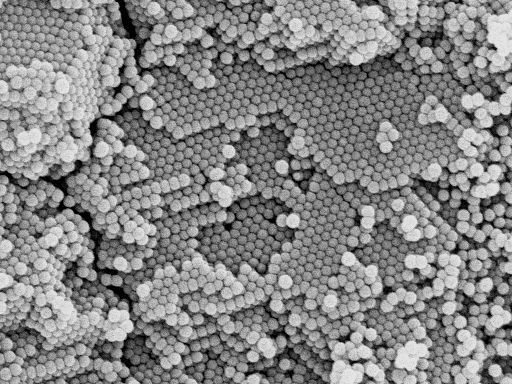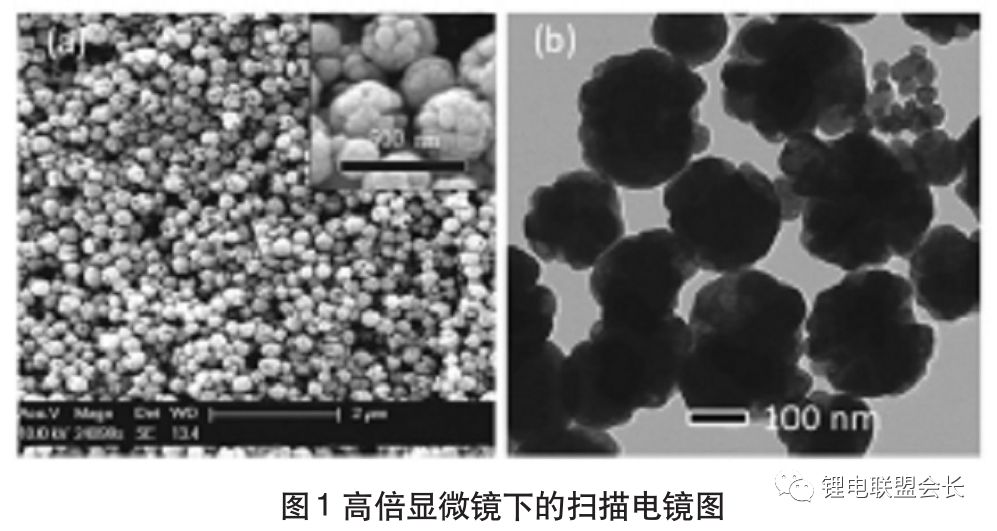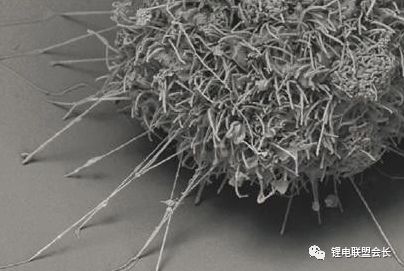Lithium-ion battery can be used in the process of secondary charging, is a secondary rechargeable battery, the main working principle for the repeated movement of lithium ions between the positive and negative, regardless of the shape of the battery, its main components All of them are electrolyte solution, positive electrode sheet, negative electrode sheet, and separator. At present, the international production of lithium-ion batteries is mainly concentrated in China, Japan and South Korea, and the main lithium-ion battery market is mobile phones and computers. With the continuous development of lithium-ion batteries, the application field is gradually expanding, and its use in the use of positive electrode materials has changed from a single to multiple directions, including: olivine lithium iron phosphate, layered cobalt acid Lithium, spinel-type lithium manganate, etc., to achieve the coexistence of a variety of materials.
From the aspect of technological development, it can be seen that more new cathode materials will be produced in the future development. For the cathode material of a power battery, it has relatively strict requirements in many aspects such as cost, safety performance, cycle capability, and energy density. In the field of applied materials, since lithium cobaltate has a relatively high cost and low safety, it is generally applied to general consumer batteries in specific applications, and it is difficult to meet the related requirements of power batteries. The above listed other materials have been fully utilized in the current power battery. In lithium-ion battery materials, the negative electrode material is an important component that can have a significant impact on the overall battery performance. At present, the anode materials are mainly divided into two categories, one is a commercial application of carbon materials, such as natural graphite, soft carbon, and the other is a non-carbon anode material that is under development but has a promising market prospect. For example, silicon-based materials, alloy materials, tin-gold materials, and the like.

1 Carbon Anode Material: This type of material is a balanced anode material in terms of energy density, cycle capability, and cost input. It is also the main material to promote the birth of lithium-ion batteries. Carbon materials can be classified as Two major categories, namely graphitized carbon materials and hard carbon. Among them, the former mainly includes artificial graphite and natural graphite. The formation process of artificial graphite is: After the temperature above 2500°C, the soft carbon material is obtained after graphitization. MCMB is a relatively common one in artificial graphite. Its structure is spherical, the surface texture is smooth, and its diameter is approximately 5-40μm. Due to the influence of the smoothness of the surface, the probability of reaction between the electrode surface and the electrolyte is reduced, which in turn reduces the irreversible capacity. At the same time, the spherical structure can facilitate the insertion and extraction of lithium ions in any direction, and has a greater promoting effect on the structural stability. Natural graphite also has many advantages, such as higher crystallinity, more embeddable locations, and lower price, which is an ideal lithium-ion battery material. However, there are also certain disadvantages. For example, when reacting with the electrolyte, the compatibility is poor, and there are many defects on the surface during crushing, which all have a large adverse effect on the charging or discharging performance.
In addition, the formation process of hard carbon is: in the state of 2500°C, it is difficult to implement graphitized carbon materials, which are mainly pyrolytic carbons of macromolecular compounds, which can be seen by high magnification microscopy, which is due to the accumulation of many nanoglobules As a result, the overall appearance of flower clusters, as shown in Figure 1. An amorphous region having a large number of nanopores on the surface thereof far exceeds the standard capacity of graphite in terms of capacity, and thus has a large adverse effect on the cycle capacity.

2 Silicon anode materials: Since the storage of silicon is relatively abundant and the price is relatively low, it is ideal for use as a new type of anode material in lithium ion batteries. However, since silicon is a semiconductor, its conductivity is poor, and in the process of embedding, it will expand the volume several times as much as before, and the maximum expansion can reach 370%. This will lead to the powdering and shedding of active silicon, making it difficult to communicate with electrons. Making full contact allows for a rapid reduction in capacity. In order to make silicon well-applied in lithium ion battery materials, it can effectively control its volume in the process of charging or discharging, so that its capacity and circulation capacity can be greatly guaranteed. Several ways to achieve, first, the use of nano-sized silicon. Second, combine silicon with non-reactive substrates, active substrates, and adhesives. Third, using silicon thin films, it has been regarded as the next most suitable commercial negative electrode material.
3 Lithium ion battery cathode material
Lithium cobaltate is used as a positive electrode material and it has been used for the longest time, and it is still a positive electrode material in consumer electronics products up to now. Compared with other cathode materials, lithium cobalt oxide can be seen that the voltage during its operation is relatively high, and the voltage operation during charge or discharge is relatively stable, can meet the requirements of high current, has strong cycle performance, and has high conductivity efficiency. And batteries and other processes are relatively stable. However, it also has many shortcomings. For example, resources are scarce, prices are relatively expensive, cobalt is toxic, there is a certain risk when used, and there is a negative impact on the environment. In particular, its security cannot be effectively guaranteed, which will become an important factor that restricts its extensive development. In the research conducted on it, the doping of metal cations such as Al3+, Mg2+, and Ni2+ is the most widely used. With the continuous advancement of scientific research, the use of metal cations such as Al3+ and Mg2+ has begun to be used. In the preparation of lithium cobalt oxide, there are mainly two methods, namely solid phase synthesis and liquid phase synthesis. Commonly used in the industry is a high-temperature solid-phase synthesis method, which mainly utilizes a lithium salt such as Li2CO3 or LiOH, etc., and a cobalt salt such as CoCO3, etc., is fused in a ratio of 1:1, and is heated at a high temperature of 600°C to 900°C. In the state of calcination, it is formed. The current application of lithium cobalt oxide in the market is mainly in the secondary battery market, and it is also the best choice for small high-density lithium-ion battery materials.

The ternary cathode material has a remarkable ternary synergistic effect. Compared with lithium cobalt oxide, it can be seen that there is a great advantage in terms of thermal stability, and the production cost is relatively low, and it can be the best substitute material for lithium cobalt oxide. . However, its low density and cycle performance also need to be improved. In this regard, adjustments can be made using improved synthesis techniques and ion doping. The ternary materials are mainly used in cylindrical lithium-ion batteries such as steel shells and aluminum shells, but due to the expansion factors in the soft-pack batteries, their applications are greatly limited. In the future applications, there are two main directions for its development: First, in the direction of high-manganese, it is mainly developed in small portable devices such as Bluetooth and mobile phones. Secondly, in the direction of high nickel, it is mainly applied in areas where the demand for energy density is high, such as electric bicycles and electric vehicles.

Lithium iron phosphate has good cycle performance and thermal stability in charge and discharge. It has strong safety protection during use, and the material is green and environmentally friendly, it will not cause serious damage to the environment, and at the same time, the price is relatively low. It is considered by China's battery industry as the best material for the production of large-scale battery modules. The current main application areas are: electric vehicles, portable mobile charging power supply, etc. In the future development will be in the direction of energy storage power, portable power supply in-depth development.
Lithium manganate has strong safety and overcharge resistance in applications. Because China's manganese resources are relatively abundant, the price is relatively low, the pollution to the environment is relatively small, non-toxic and harmless, and the industrial preparation operation is relatively simple. However, during the charging or discharging process, the spinel structure is unstable, and the Jahn-Teller effect is easily generated. In addition, the dissolution of manganese in the high temperature state easily reduces the battery capacity. Therefore, its application is also greatly limited. At present, lithium manganese oxide is mainly used in small batteries, such as mobile phones and digital products. Lithium iron phosphate can replace each other in power batteries. Therefore, there is a strong competition and the direction of development will be towards high energy and high. Density, low-cost trend development.
Lithium-ion battery products have shown a vigorous development trend. With the development of science and technology, smart phones, computers and other products have been widely used, which will increase the demand for lithium-ion batteries and bring them greater development opportunities. . At the same time, vehicle-mounted lithium-ion and energy storage power supplies have also been gradually developed, providing new growth points for lithium-ion batteries. From this we can see that in the future development, we will strengthen our research efforts in this area, so that the role of lithium-ion batteries to play a greater role, which will also lead its battery materials continue to be replaced.
Ningbo Autrends International Trade Co.,Ltd. , https://www.vapee-cigarettes.com